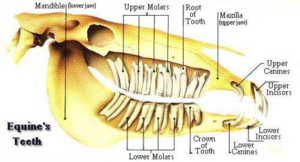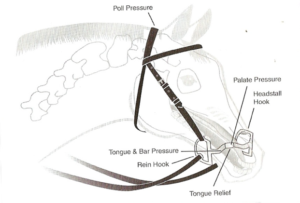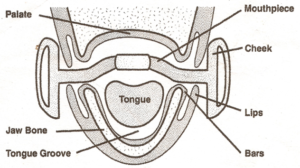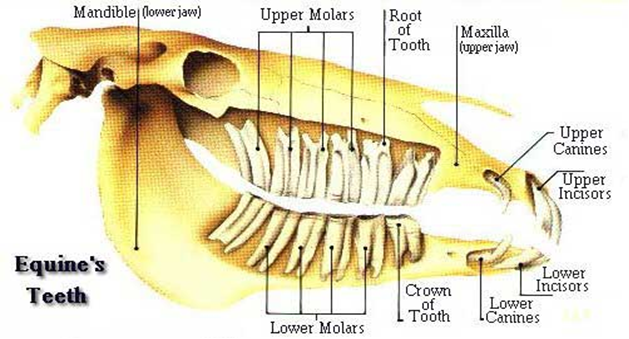Bitting is probably one of the least thought of part of the tack, yet is so important. Most of us will put the commonest shiniest bit into our horse’s mouth, and that’s it. Each mouth is variably different, the thickness of cheek, the height and shape of the vault-narrow, high, floppy rugae , the tongue and the bars. Bits also have pressure points which activate through the head and poll. The bit is an extension of the rider’s hands, aiding in communication between the horse and rider. Each mouth-equine or human is individual like your fingerprint. All riders have individual styles, some are very soft, others aggressive others nervous. Some riders use their hands as a balancing aid. Adding into this is the horse. Some horses become very hard mouthed, others can be very scared of the bit, and others can be just arrogant and naughty! So it’s important for you, the rider to find the bit that works well for both horse & rider.
AGE APPROPRIATE
Taking into consideration is age. A young horse just beginning its education needs to be bitted gently and kindly. A horse is an emotive animal – it lives on emotions and occasions related to this. So to ensure a good riding career all young horses need soft and directive bits. Horses are dentally compromised from age 2 through to age 5 from teething (shedding and gaining of 24 teeth) so cheek pressure needs to be considered.
MECHANICAL ACTION
The Bit is an extension of your hands. There is mechanical action working on pressure points with each movement of the bit. Different styles of Bits offer varied pressure points. The diagram on opposing page shows the intraoral pressure points (those within the mouth) and external pressure points.
Cheek Pressure
Cheek pieces move against, downwards, upwards
Mouthpiece
The bars put pressure downwards on Bars, and up & downwards pressure on lips.
Joints
Joints put pressure-downwards on tongue & upwards on palate. Many have pinching actions.
Poll Pressure
Poll pressure is activated when other pressure points are active.
The Tongue, Bars and palate all receive ‘messages ‘or pressure when the bit used.
The cheek pieces act individually as pressure points.
The poll is put under pressure from the actively moving bit.
If a chin strap is used, this is another area of pressure.
Nosebands and lip straps keep mouth closed around bit.
Each aid or movement of the bit works all or some of the pressure points.
Each individual aid will combine the different pressure points. For example, taking a rein out to your knee will have pressure on one check piece, bar pressure, tongue pressure, lip pressure, palatal pressure and poll pressure.
STYLES & PURPOSE
Bits come in all shapes, sizes and weights. The issue for the rider is to find the bit that is comfortable for the horse and complimentary to the rider’s hands. A heavy handed rider using a Pelham, for example, can be dangerous. A severe pull-back action with this bit often results in a rearing horse/pony. Many a horse will spend their saddle career in an unnatural physical shape as they have adapted/learnt to work away or under the Bit. The terms inverted-where the horse holds the bit below the true line, or averting, where they hold above the true line. Often the ears will be communicating the horse’s displeasure.
GOOD DENTISTRY & BITTING-TEAMWORK
A young horse, from birth should be checked by the dentist. The better the relationship and the earlier it begins will benefit the horse and ensure a long career. Before being mouthed, wolf teeth should be extracted-these remnant teeth also known as “bridle teeth” come in direct contact/interference with the bit. Up till the age of 6, a horse needs 6 monthly check-ups to ensure all “baby teeth” have shed and the permanent teeth are in correct order. Annual check-ups should be scheduled thereafter. Horse’s permanent teeth erupt at a rate of 2-3mm per year that is the front teeth “Incisors” & “Molars” the back teeth. Ideally the horse wears this down through grazing, however many don’t. Annual check-ups and treatments will ensure that your horse is maintained.
Copyright © Nic Graham 2010











